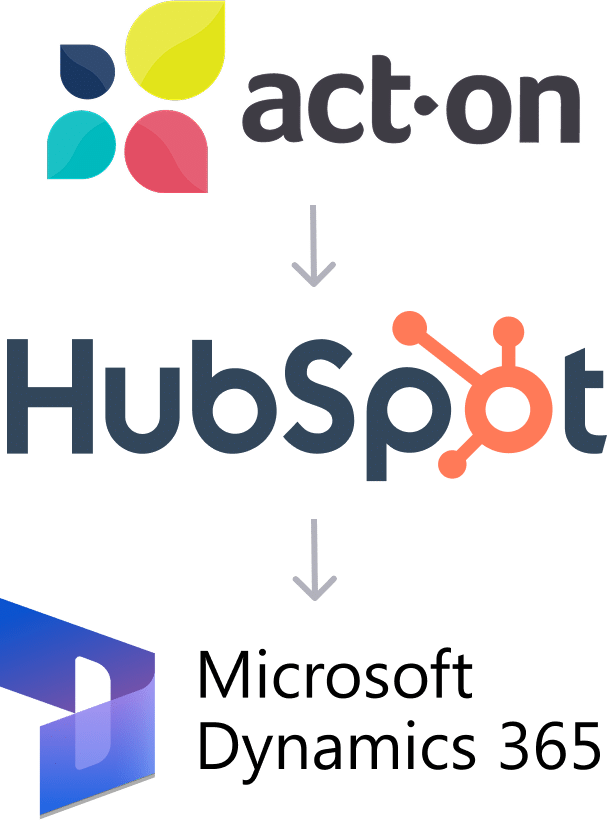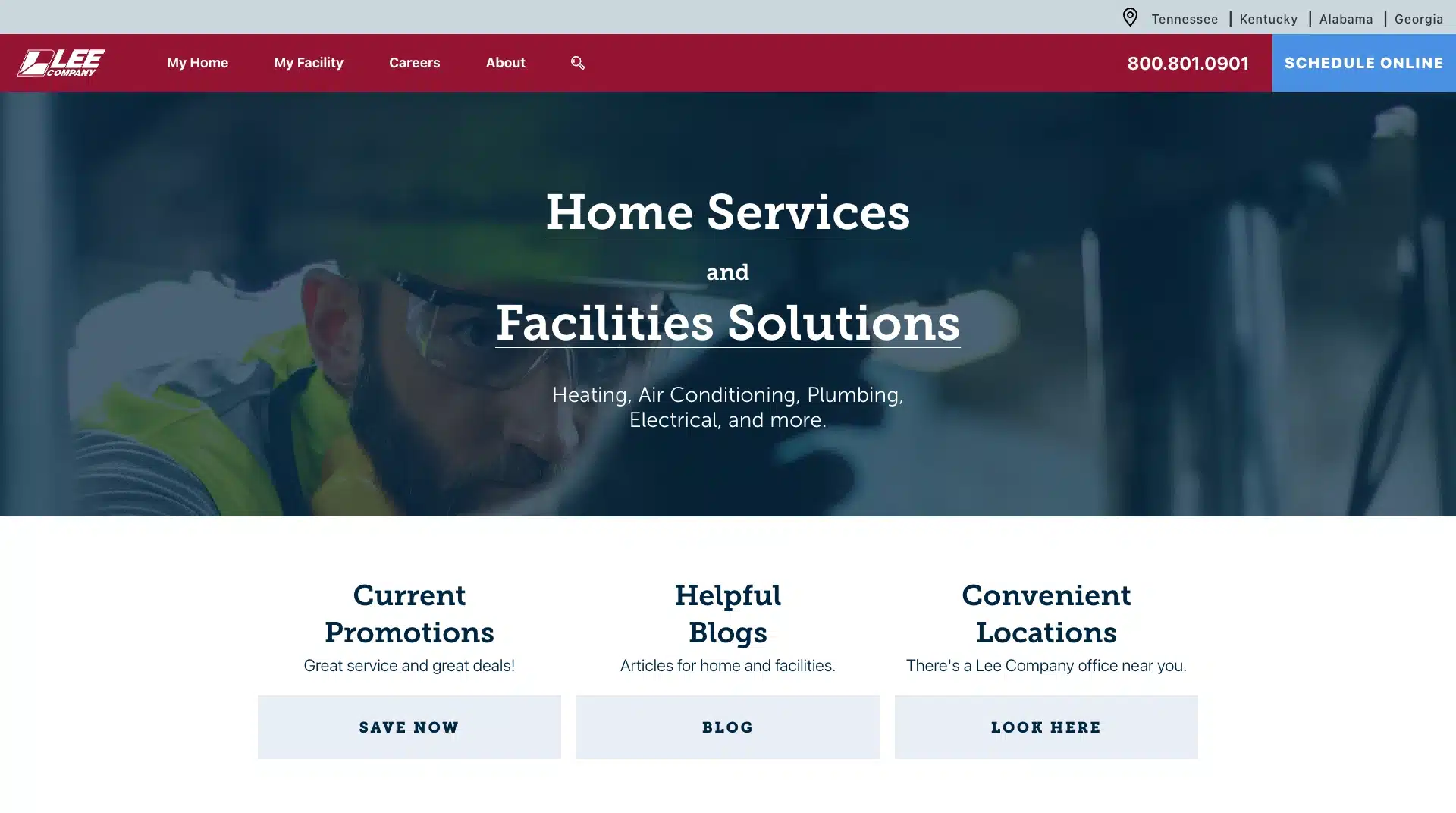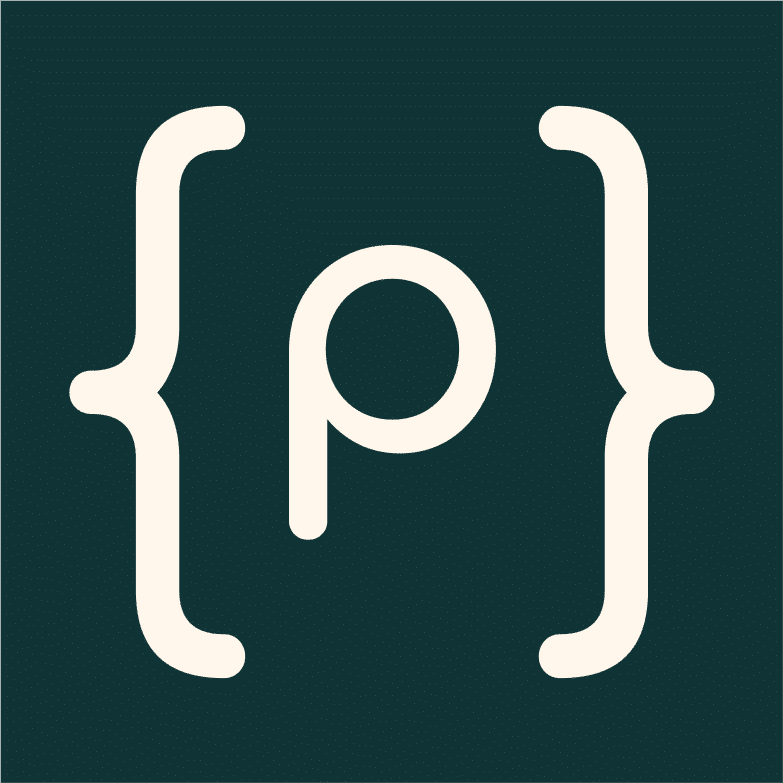Disclaimer: This project was completed during Rob’s tenure as the Technical Delivery Director at Astute Communications (2022-). Lee Company was not, and is not, a client of Petrin Development Services.

Overview
Lee Company represents one of the most operationally complex service organizations in the Southeast, offering dozens of specialized services across multiple markets through an extensive network of regional locations. Their marketing operation reflects this complexity: hundreds of landing pages with sophisticated lead capture forms supporting everything from HVAC services to plumbing emergencies, each requiring precise routing to appropriate service teams and geographic territories.
The organization’s growth trajectory and operational sophistication demanded equally sophisticated marketing technology infrastructure. However, Lee Company’s rapid expansion and evolving business requirements led to multiple form provider migrations within a compressed timeframe—first from Act-On to HubSpot in 2023, then from HubSpot to Microsoft Customer Insights in early 2025. Each migration represented significant operational risk, as form downtime directly impacts lead generation for a company where service calls generate substantial revenue streams.
This project showcases the evolution from manual, high-risk migration processes toward automated, scalable solutions that protect business continuity while enabling rapid technology adoption. The challenge required developing custom tooling that could manage hundreds of form instances across complex page hierarchies while maintaining the sophisticated lead routing and workflow automation that drives Lee Company’s service operations.

The Challenge
The Lee Company form migration challenge represented a convergence of operational complexity, technical constraints, and business continuity requirements that extended far beyond traditional content management approaches.
Business Continuity Risk: Form provider migrations for organizations of Lee Company’s scale involve substantial operational risk. With hundreds of active forms generating leads worth tens of thousands of dollars daily, even brief disruptions to lead capture functionality translate directly to revenue impact. The pressure to minimize downtime while ensuring complete migration accuracy created a high-stakes technical environment where manual processes introduced unacceptable error potential.
Legacy Architecture Constraints: The existing WordPress infrastructure predated modern content management best practices, lacking the template-based architecture and systematic content organization that typically facilitates large-scale migrations. Each form instance required individual attention across hundreds of pages, with no systematic approach for bulk updates or automated replacements available through existing platform capabilities.
Dual Migration Complexity: The strategic decision to migrate from HubSpot to Microsoft Dynamics Customer Insights fewer than 24 months after the initial Act-On transition created unique challenges. While HubSpot offered robust WordPress integration and familiar management interfaces, Microsoft Dynamics Customer Insights required custom integration development. Unlike the first migration where comprehensive platform training and workflow recreation were possible, the second transition required developing integration solutions without direct access to Microsoft’s form creation and automation management systems.
Operational Efficiency Requirements: The initial Act-On to HubSpot migration required a full-day manual effort with significant risk of errors and oversight. The organization’s growth trajectory and technology adoption pace demanded a more sophisticated approach that could accommodate future platform changes without requiring similar time investments or operational disruption.
Cross-Platform Integration Complexity: Each form provider offered different WordPress integration approaches, from Act-On’s limited functionality through HubSpot’s comprehensive plugin ecosystem to Microsoft Dynamics Customer Insights’ enterprise-focused but less WordPress-optimized tools. Creating consistent user experiences and management workflows across these platforms required custom development that could adapt to varying integration capabilities while maintaining operational efficiency.
The core challenge became: How to develop a scalable form migration methodology that could protect business continuity while enabling rapid technology adoption across complex organizational infrastructure?
The Solution
The solution approach centered on developing automated migration tooling that could transform high-risk, manual processes into systematic, efficient workflows while maintaining the sophisticated lead routing and form functionality required for Lee Company’s complex service operations.
Technology Stack & Custom Development
The Lee Company form migration solution required extensive custom development to bridge multiple form providers while creating reusable automation tools for future platform transitions.
Core Platform:
- WordPress with Advanced Custom Fields – Legacy content management foundation requiring custom migration approaches
- HubSpot Marketing Hub – Intermediate platform with robust WordPress integration capabilities
- Microsoft Dynamics Customer Insights – Target platform requiring custom integration development
- Custom PHP Development – Proprietary migration tooling and form management systems
Custom Development Scale:
- Proprietary shortcode architecture replicating HubSpot functionality for Microsoft Dynamics Customer Insights integration
- Automated audit and replacement tools for site-wide form instance management
- Custom form styling and integration frameworks for seamless platform transitions
- Sophisticated workflow migration systems for maintaining lead routing automation across platform changes
Migration Automation Tools:
- Site-wide form instance discovery and cataloging system
- Automated shortcode replacement tools with form ID mapping capabilities
- Bulk migration functionality reducing hundreds of manual updates to systematic processes
- Form testing and validation frameworks ensuring migration accuracy and business continuity
Integration & Performance:
- Cross-platform form styling consistency frameworks
- Real-time form functionality validation during migration processes
- Automated lead routing preservation across platform transitions
- Performance optimization for form loading and submission processing
Systematic Migration Methodology
Automated Discovery and Cataloging: Rather than manually tracking form instances across hundreds of pages, the solution developed automated discovery tools that could catalog every form implementation by provider and form ID. This systematic approach enabled precise migration planning while ensuring no form instances were overlooked during transition processes.
Shortcode Standardization Framework: The migration solution created standardized shortcode architecture that could accommodate different form providers through configuration rather than custom implementation. This approach enabled rapid platform transitions by changing underlying integration logic while maintaining consistent page-level implementation across the site.
Bulk Replacement Automation: The most significant efficiency gain came through developing automated replacement tools that could systematically update hundreds of form instances across the site. Rather than requiring day-long manual migration efforts, the automation reduced migration time to under an hour while eliminating human error potential.
Workflow Preservation Systems: Beyond form display functionality, the solution ensured sophisticated lead routing and automation workflows were preserved across platform transitions. This included maintaining proper lead assignment to geographic territories and service teams while ensuring notification systems remained functional throughout migration processes.
Testing and Validation Frameworks: The migration approach included comprehensive testing protocols that could validate form functionality, lead routing accuracy, and workflow preservation across platform changes. This systematic validation approach provided confidence in migration success while enabling rapid rollback if issues were identified.
The Outcome
The Lee Company form migration project successfully transformed high-risk, manual processes into efficient, automated workflows while delivering measurable operational benefits and establishing reusable methodologies for future technology transitions.
Operational Efficiency Achievement: The custom migration tooling reduced form provider transitions from day-long manual efforts to systematic processes completed in under an hour. This efficiency gain eliminated the operational risk associated with extended migration periods while reducing the potential for human error during complex platform transitions.
Business Continuity Protection: The automated migration approach minimized form downtime and lead capture disruption, protecting Lee Company’s substantial daily lead generation revenue during platform transitions. The systematic validation frameworks ensured lead routing accuracy and workflow preservation throughout migration processes.
Cost-Effective Project Delivery: The migration efficiency enabled the project to be completed within existing monthly retainer arrangements rather than requiring separate project pricing. This cost-effective delivery demonstrated the value of investing in automated solutions for complex operational requirements.
Strategic Relationship Expansion: The success of the form migration project led to Lee Company selecting the development team for their comprehensive website rebuild initiative. This expanded engagement provides opportunities to address the legacy architecture constraints and implement modern content management practices across their entire digital infrastructure.
Reusable Technology Framework: The custom migration tooling and systematic approaches developed for Lee Company created reusable frameworks applicable to future client projects facing similar form provider transitions. The automated discovery and replacement tools represent valuable intellectual property for managing complex content migrations across diverse organizational contexts.
Platform Agnostic Methodology: The successful navigation of multiple form provider transitions (Act-On to HubSpot to Microsoft Customer Insights) validated the effectiveness of platform-agnostic migration approaches. This methodology enables future technology adoption without requiring similar custom development investments while maintaining operational efficiency and business continuity protection.


